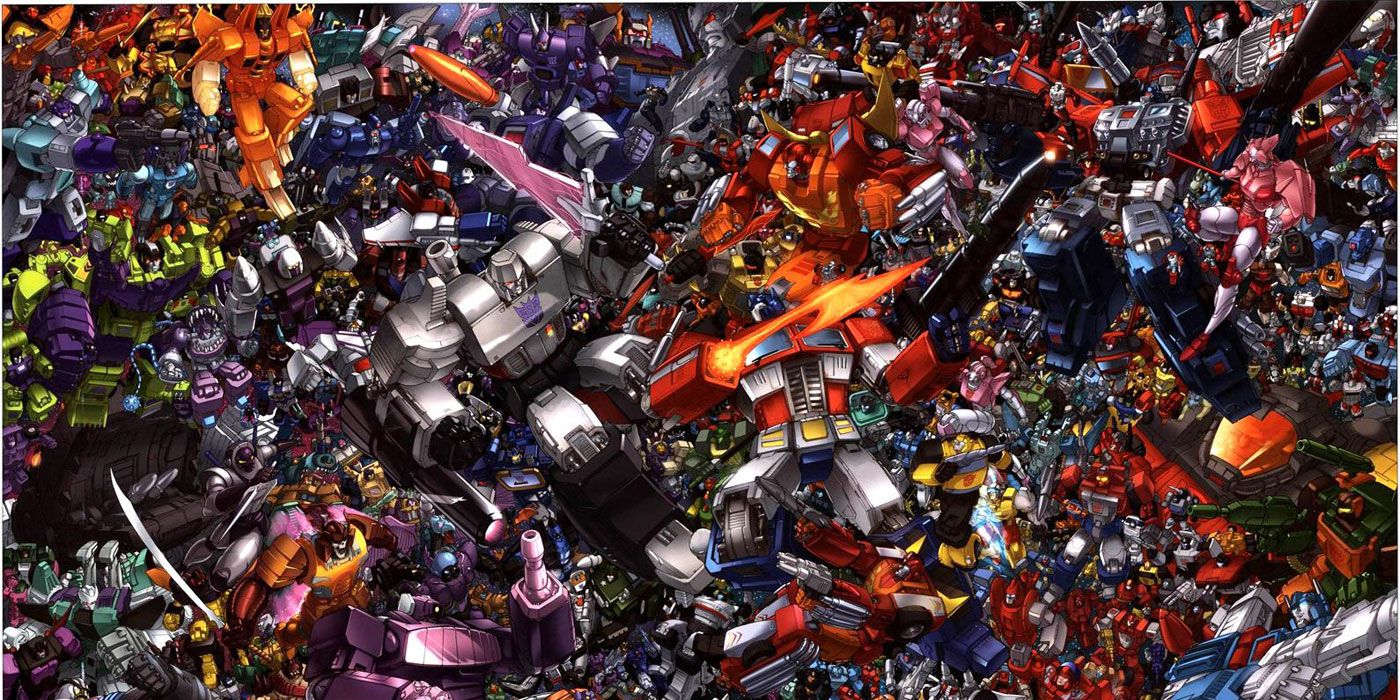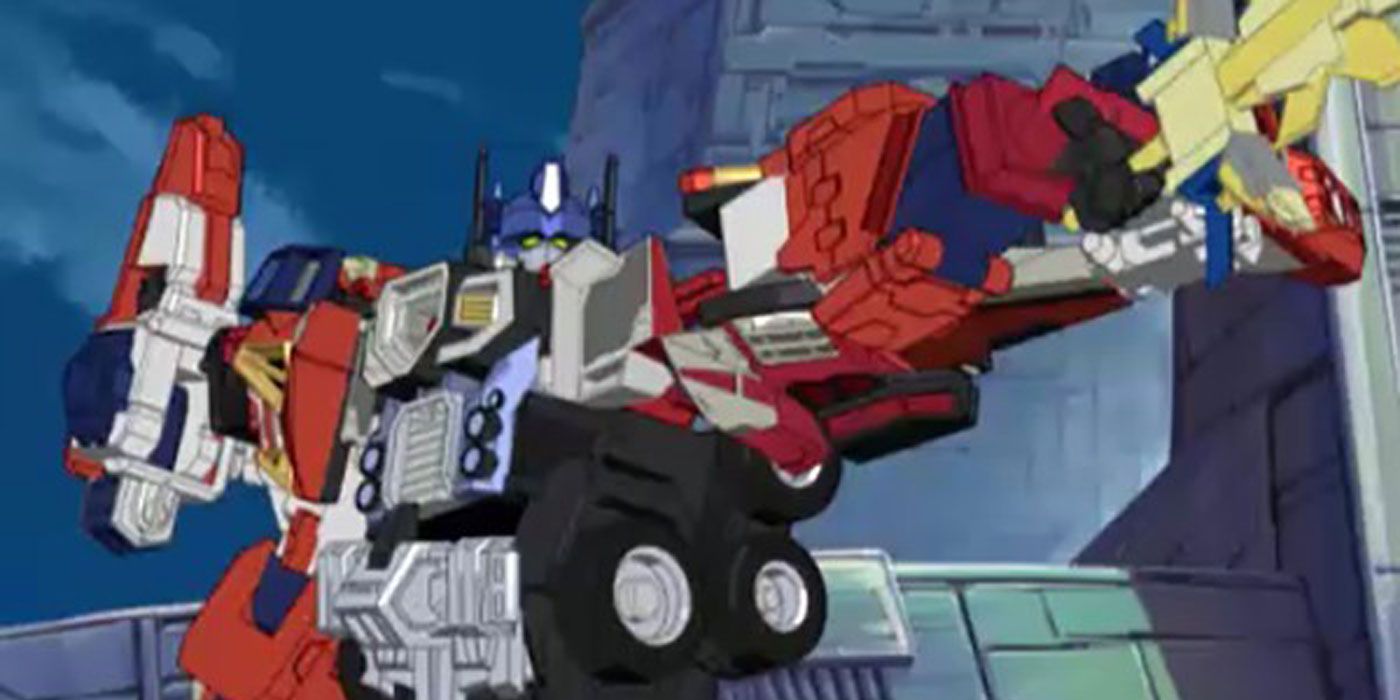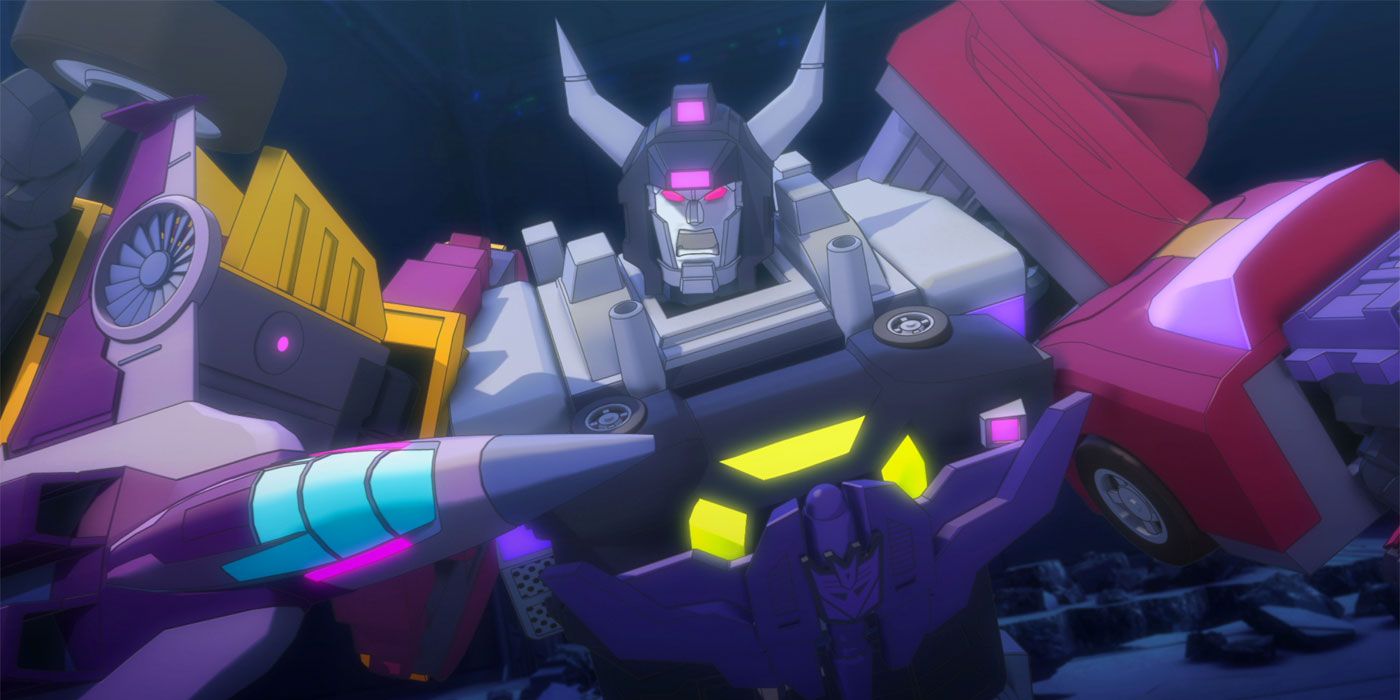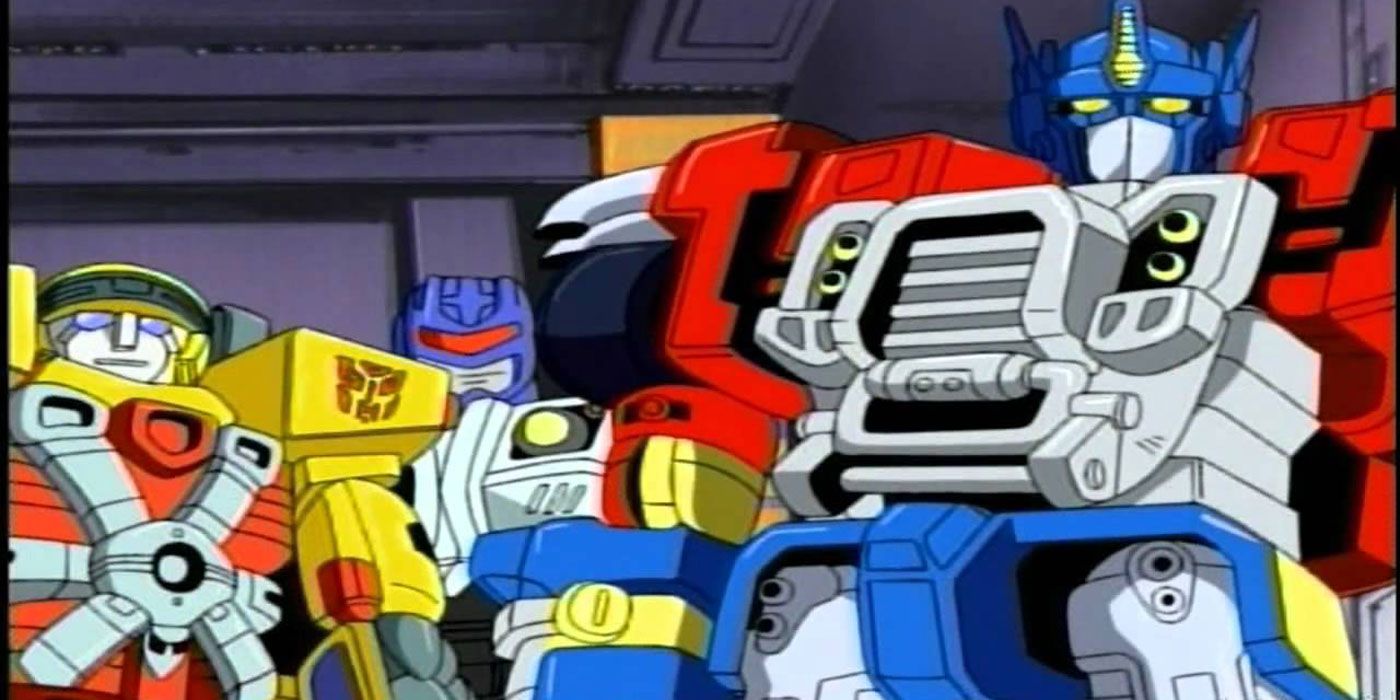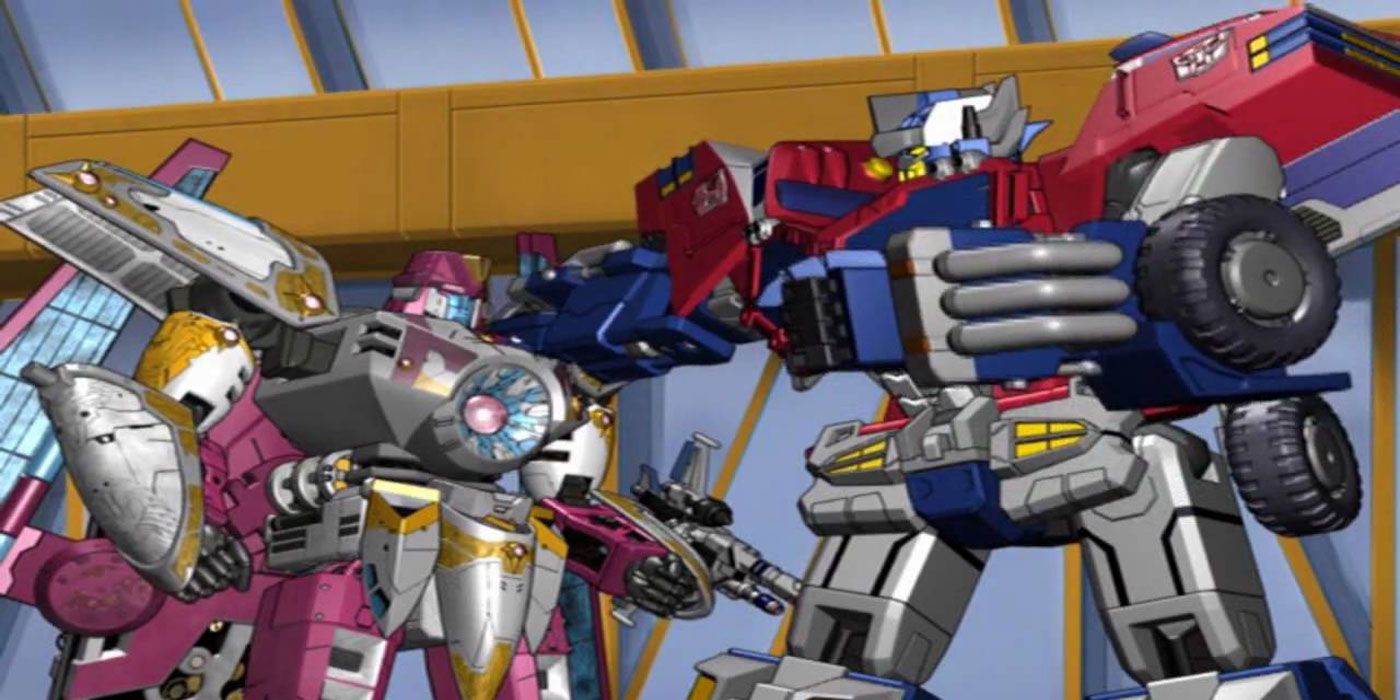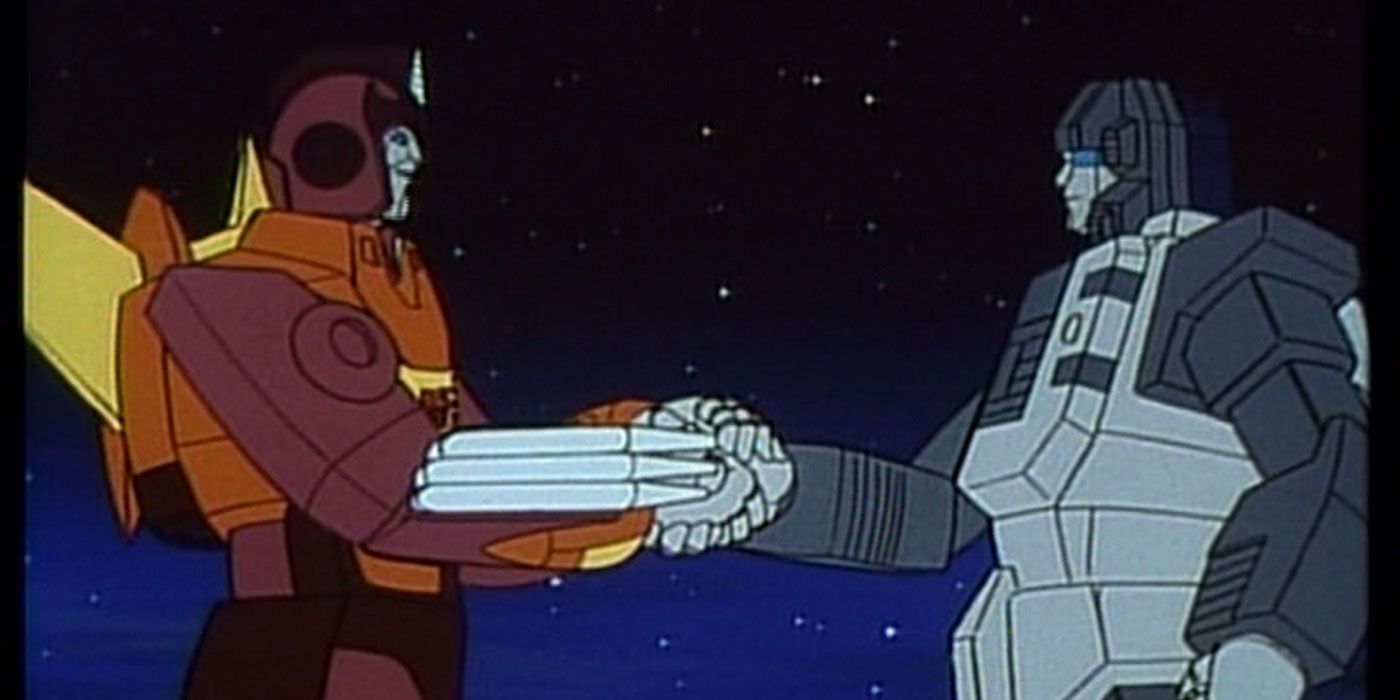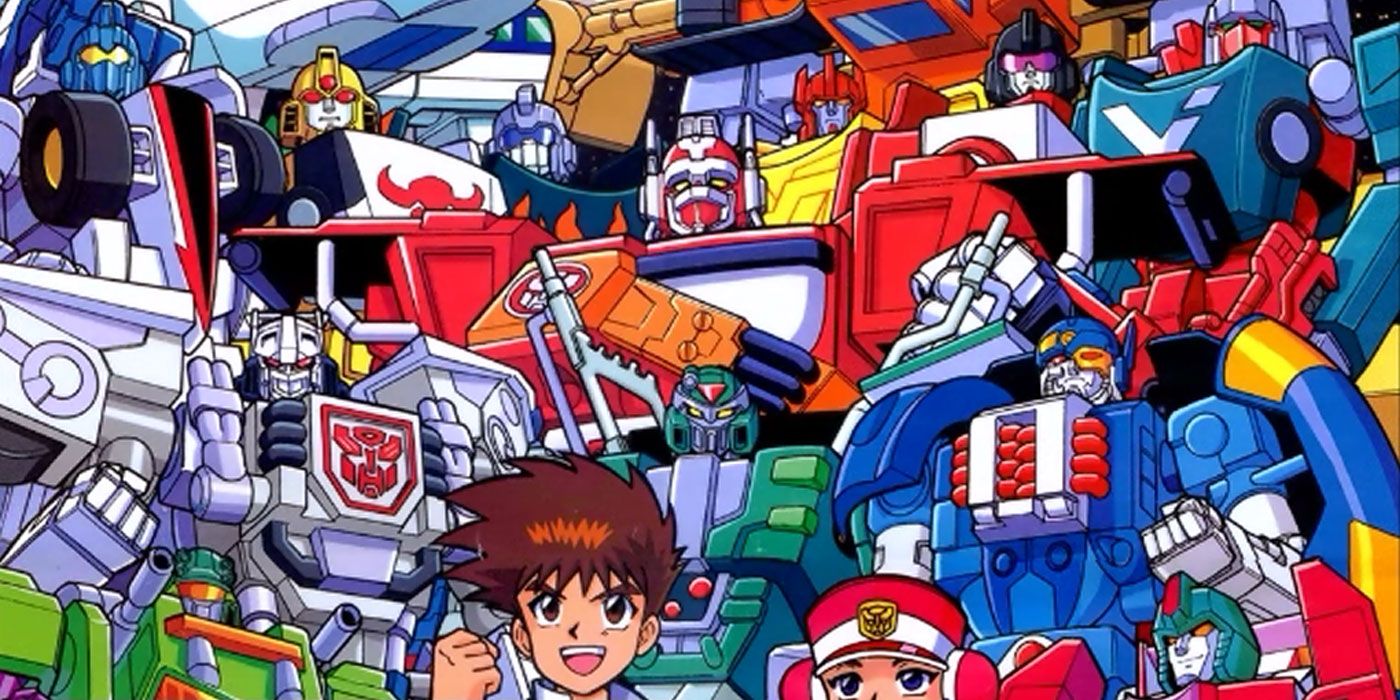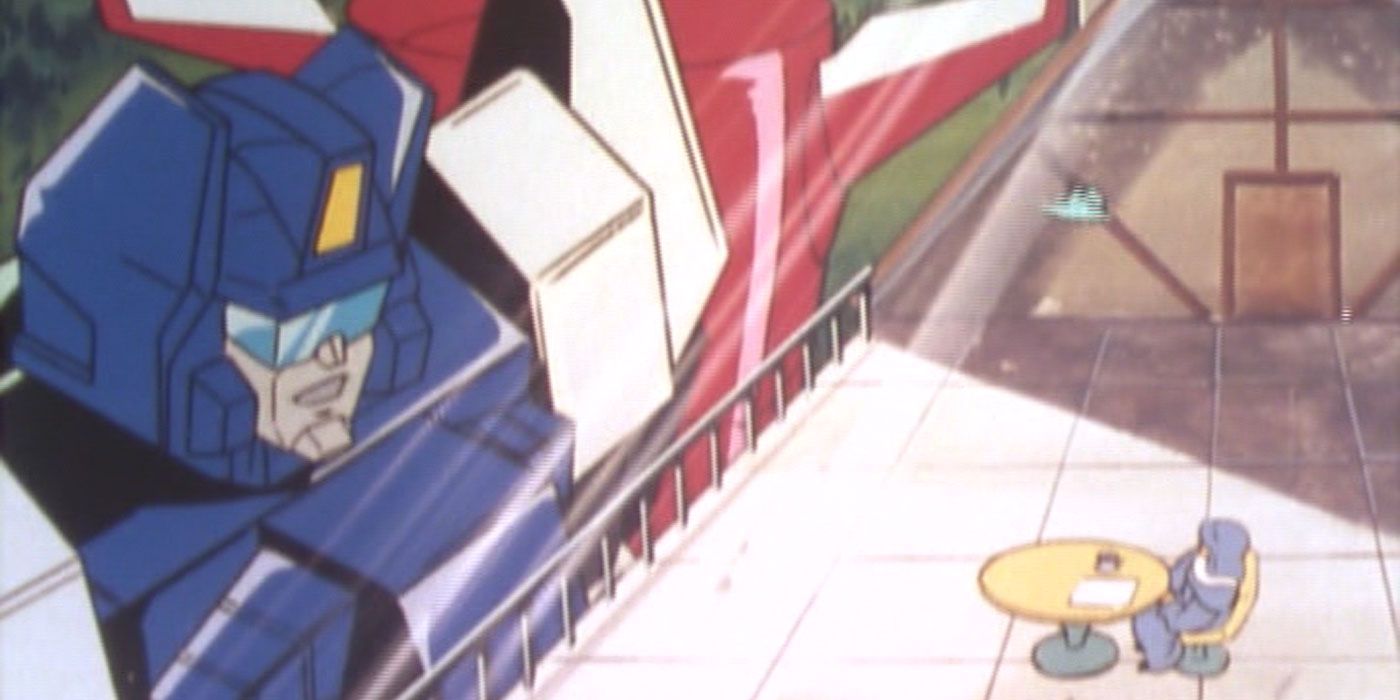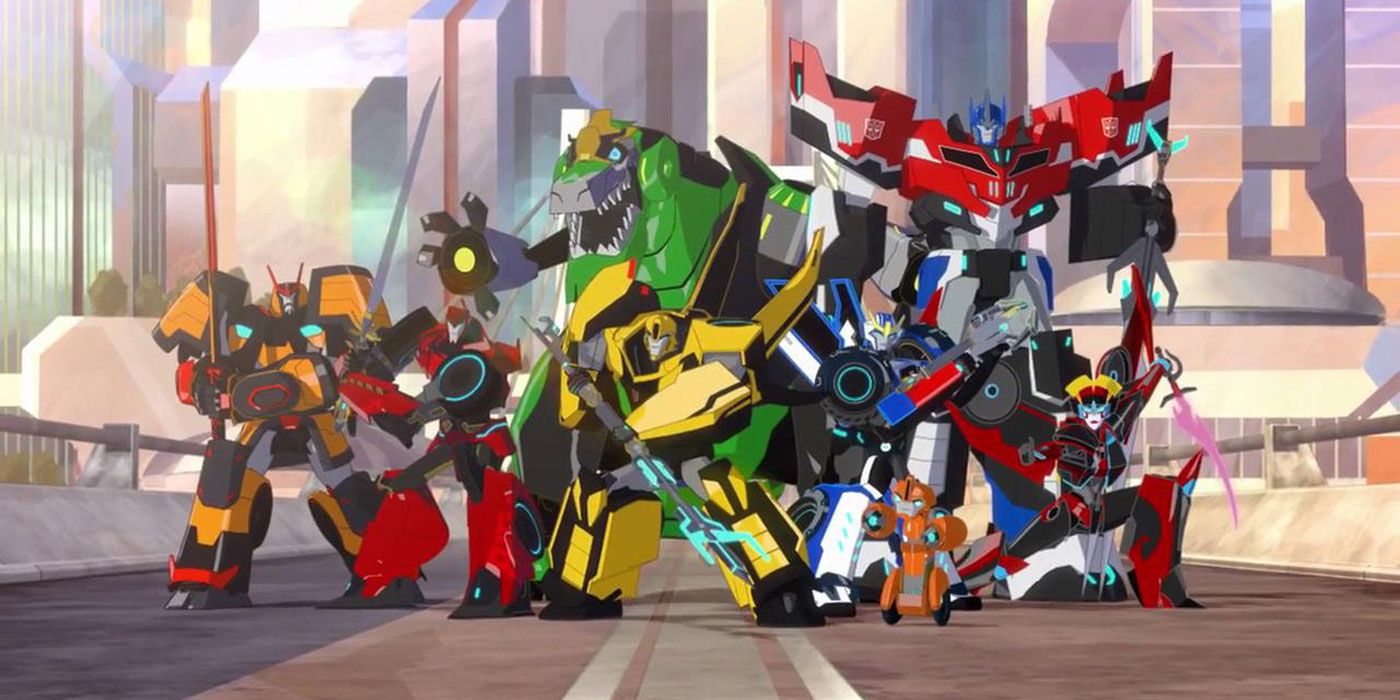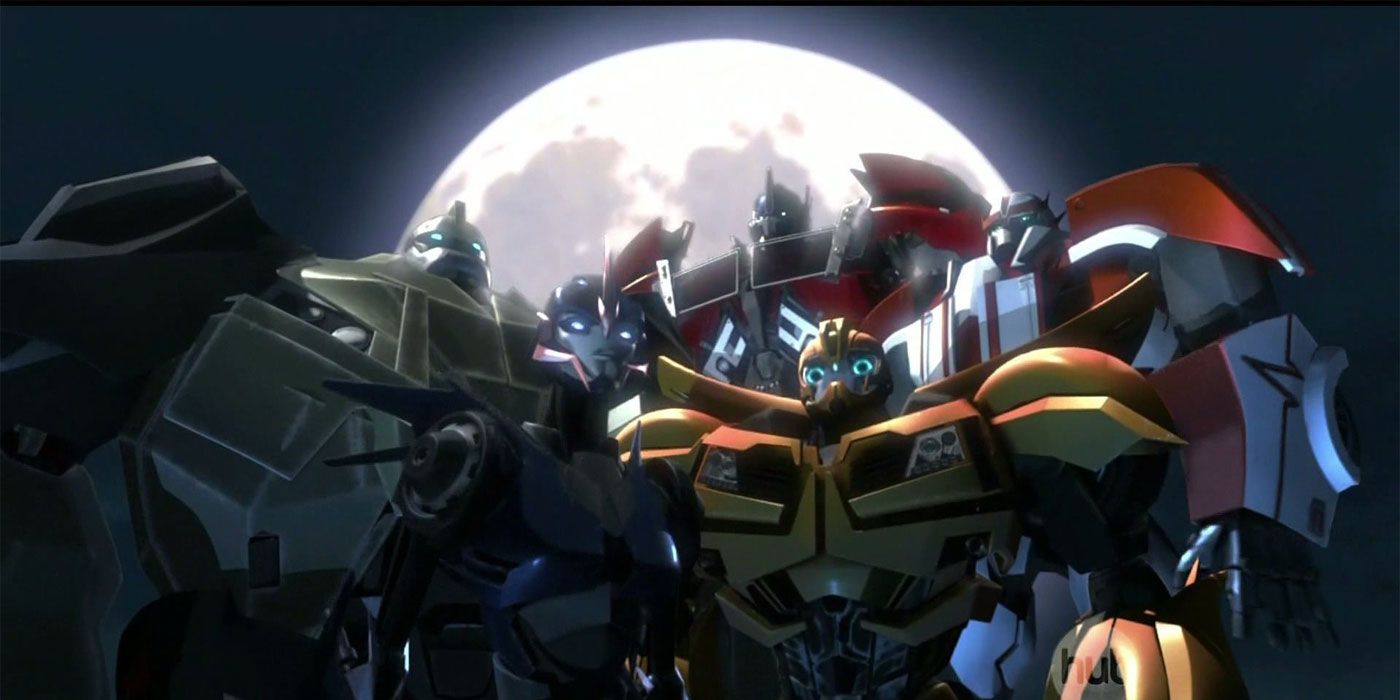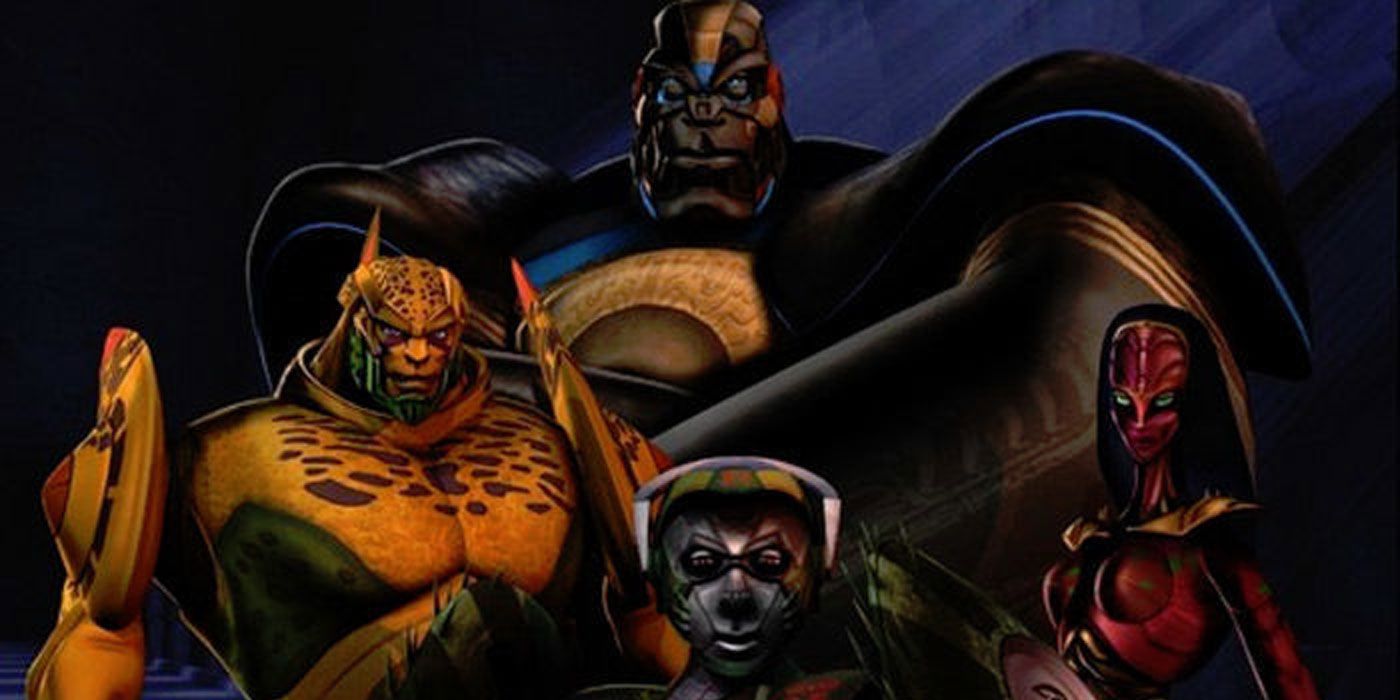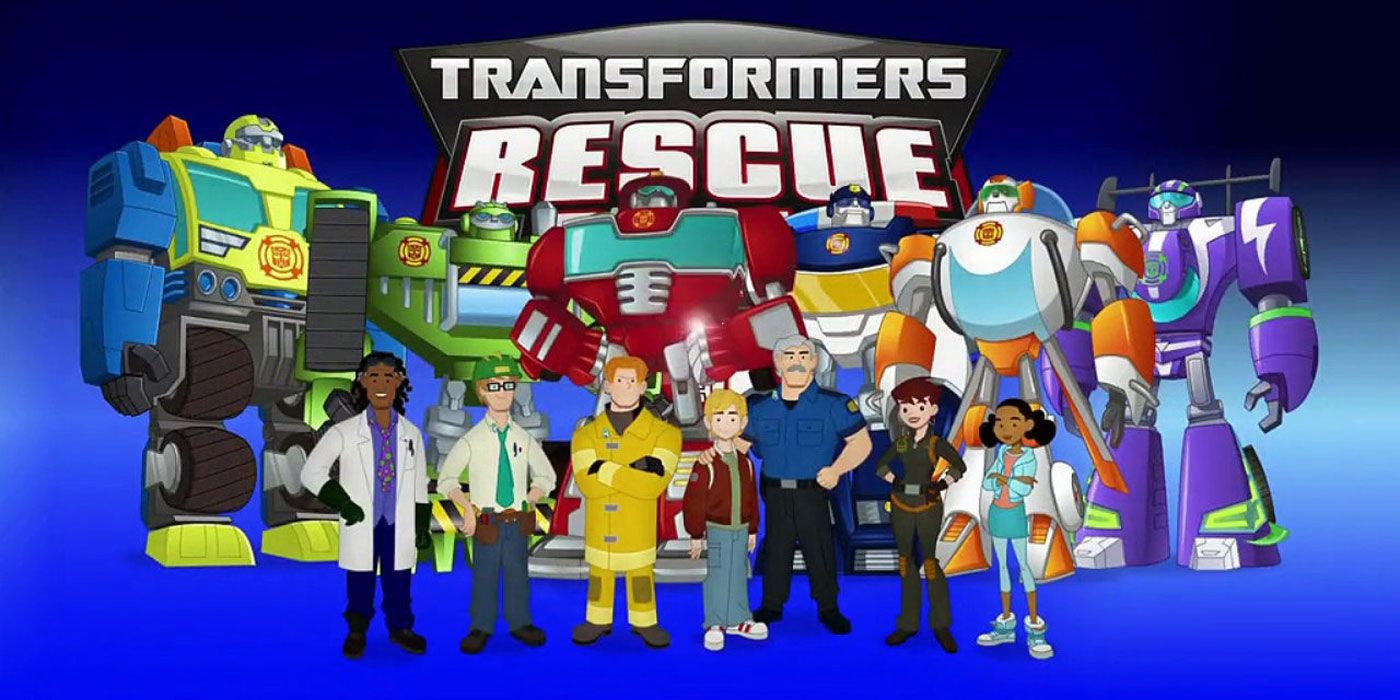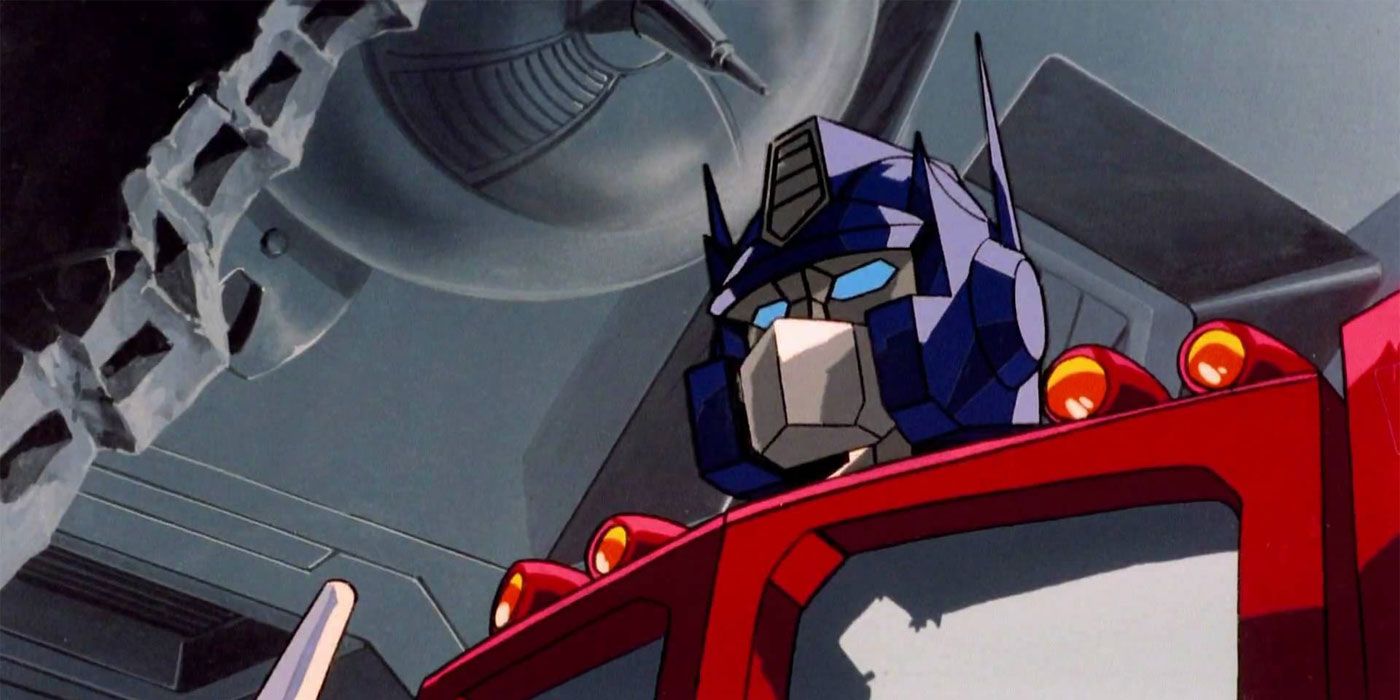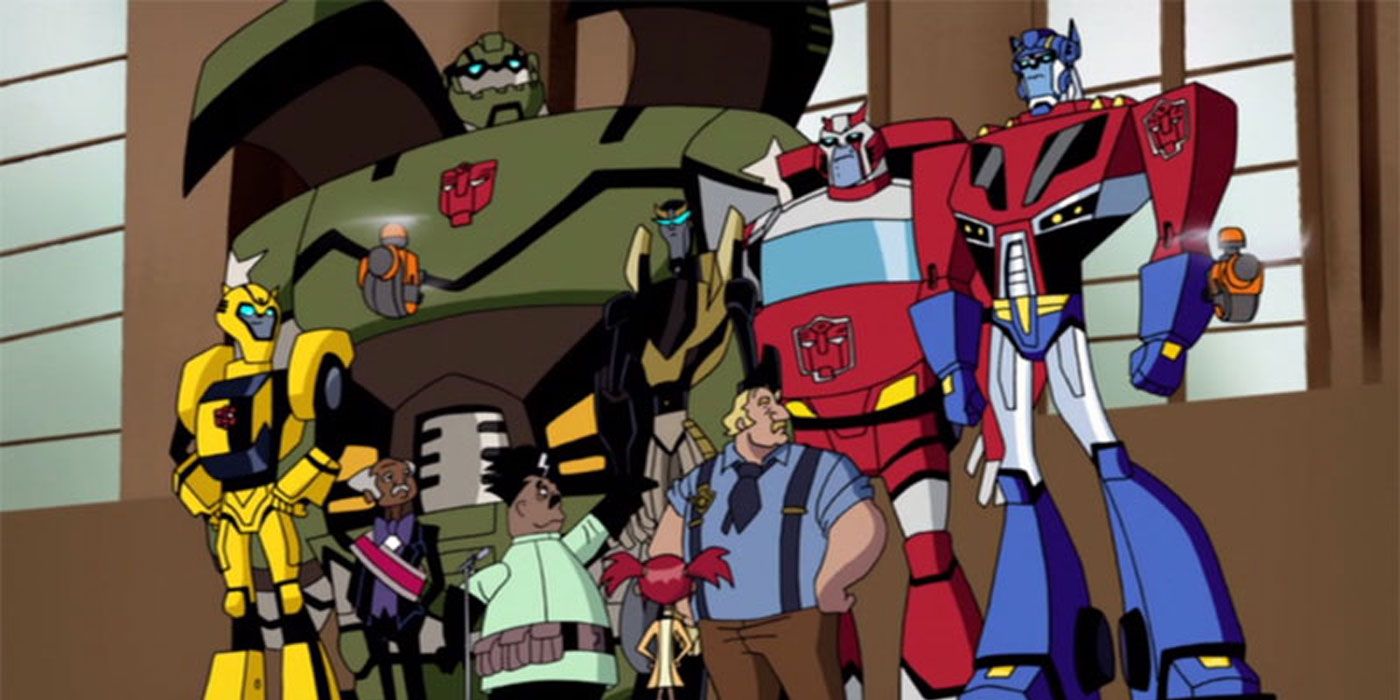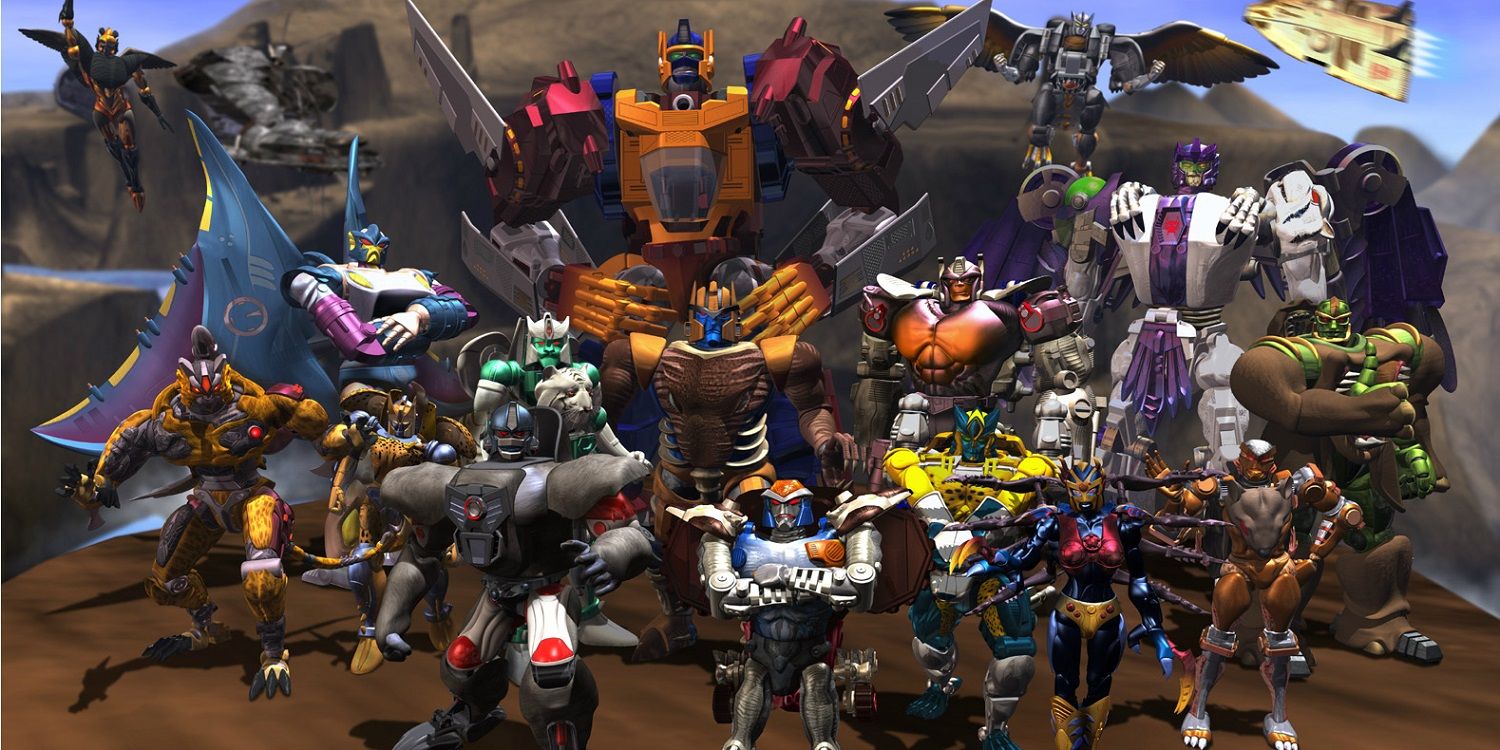One of the longest running toy-centric franchises in the world, Transformers has enjoyed no shortage of innovation and evolution on the small screen. Originally imported from Japan by toy manufacturing behemoth Hasbro in 1984, Marvel was commissioned with creating a back story for the shape-shifting toys that would be used both in that company’s Transformers comic book, as well as in Sunbow’s beloved animated series.
While it has existed in several mediums (you may have heard about a movie or two) Transformers feels most at home as an animated series, where the world of the Autobots and Decepticons is given room to breathe while still offering dynamic action and innovative storytelling. The franchise’s cartoons don’t always manage to clear that creative hurdle (indeed, quite a few of them don’t even come close), but the ones that do are timeless entertainment that transcend the ostensible purpose of selling toys. Here we present Every Transformers Animated Series, Ranked Worst To Best.
15. Energon
The second entry in what is referred to as the Unicron Trilogy, Transformers: Energon is downright impressive in the scope of its ineptitude. Like the other entries in the Unicron Trilogy, the series was primarily produced in Japan and dubbed for American audiences. Energon can’t really blame its problems on a bad dub though - it’s terrible in any language.
Energon’s plot about the Autobots stopping the Decepticons from awakening Unicron ends up resolved about halfway through the 52 episode series, only for the show to undo the plot progress and repeat itself… and at that point there were still 13 nonsensical episodes left.
The cel-shaded animation is somehow cruder than Beast Wars and Beast Machines, shows that aired several years earlier. Character motivations change for no real reason other than the writers decided it. It’s not difficult to imagine your average eight year old smashing his Optimus Prime and Megatron toys together crafting a more interesting, nuanced story than what Energon serves up.
14. Combiner Wars
Combiner Wars promised so much. Announced as an adult-targeted animated series to tie in with the collector friendly Combiner Wars toy line, production studio Machinima promised mature storytelling and sophisticated animation, a show specifically for people who wished Transformers had grown up along with them. It was touted as the Games of Thrones of Transformers, which frankly seemed like testing fate before we even saw a second of the show.
And boy, did it take awhile. After seemingly endless production delays (the Combiner Wars toy line had been off shelves for months by the time the series debuted), Combiner Wars began streaming online in August 2016. To say the show was a disappointment would be a hilarious understatement. The first five-minute episode’s opening act consists of two Transformers falling through space, haphazardly punching each other. The animation quality is barely better than Energon, which aired more than a decade earlier. The plot is utterly nonsensical. The voice acting is embarrassingly amateurish. The character work seems almost intentionally hostile; Windblade, a famously pacifist Autobot in most other fiction, is presented as a psychotic murderer.
The series was met with swift and immediate revulsion, which somehow has not stopped Hasbro from ordering two sequel series. The only reason this isn’t in the bottom slot is that it’s mercifully short.
13. Armada
It’s difficult to properly articulate the excitement level among Transformers fans in the lead up to the premiere of Transformers: Armada. While Beast Wars had largely won over the fandom (for reasons we’ll get into later), Beast Machines deeply polarized Transformers fans (for reasons we’ll also get into later), and it was perceived as underperforming, leading Hasbro to rethink not only their approach regarding their Transformers animated series, but also to the entire franchise.
After two series of notable experimentation with the franchise, Armada was pitched as a traditionalist, back to basics premise: the heroic Autobots defending Earth from the evil Decepticons. This alone was enough to get most people excited, but after Toonami aired a now-legendary promo for the show, expectations reached a fever pitch.
Then we saw the actual series, and it was an unmitigated disaster. Rushed into production, the series was full of amateurish mistakes, such as characters routinely calling each other the wrong names and embarrassingly bad animation. Perhaps most ironically, the adult fans who longed for a back to basics series in the wake of Beast Machines found themselves confronted with such a series, but one riddled with production problems and aimed at a significantly younger audience. For these reasons, Armada is likely still the biggest disappointment in Transformers animation history.
12. Cybertron
The third and (mercifully) final entry in the Unicron Trilogy, Transformers: Cybertron had a heck of an uphill battle right out of the gate. In the wake of twin disasters Armada and Energon, fans were not feeling generous toward their beloved franchise. Give Cybertron its due: it is not as terrible as Armada and Energon... but it’s still pretty terrible.
While it didn’t endure the embarrassing production gaffes of Armada or the utter aimlessness of Energon, Cybertron is unlikely to be anyone’s favorite Transformers series. It tells a more focused story than its predecessors and features a much, much stronger American dub, for which more than a little credit should go to the long-suffering voice cast that originated with Beast Wars, who could not work their magic on Armada or Energon.
While it was a marked improvement in some ways, Cybertron’s cel-shaded animation was only slightly better than Energon’s, and you’d be hard pressed to find any compelling characters or emotional stories. It’s a workmanlike series that is, at best, supremely forgettable.
11. The Headmasters
While interest in the Generation 1 toy line and animated series was fading in America by 1987, the franchise was still going strong in Japan. After the end of Generation 1’s abbreviated fourth season, Hasbro decided to no longer invest in new episodes of the series. However, Hasbro’s Japanese partners, Takara, were eager to continue the animated adventures of the Autobots and Decepticons.
Thus was birthed The Headmasters, the first fully Japanese produced Transformers animated series. Ignoring the fourth season of the original series, the series introduced a different version of the titular Headmasters who, instead of being Transformers who bonded with the organic aliens the Nebulans, were now diminutive Transformers who could use larger bodies.
While the series started with an aesthetic very similar to the American conceived Generation 1 cartoon, the show’s tone eventually shifted into a more anime-influenced direction and discarded some surprisingly bedrock aspects of the series (Cybertron is destroyed! Optimus Prime dies again! Galvatron gets… stuck in an iceberg?).
Generally considered the weakest of the Japanese Generation 1 series, Headmasters feels like something of a half measure, stuck between the established tropes of the original series and the boundary-pushing, decidedly weirder direction its successor series would take.
10. Robots In Disguise (2001)
Following the relative failure of Beast Machines (and the cataclysmic failure of the Star Wars prequel toy line, which put them in serious financial peril), Hasbro decided to cancel Transtech, which was intended to be the third entry in the inventive, forward-thinking line of Transformers renaissance that started with Beast Wars. Licking their creative and commercial wounds, Hasbro rethought their entire approach to the franchise, which would eventually lead to the credibility damaging Unicron Trilogy.
The cancellation of Transtech left a yearlong gap in Hasbro’s Transformers line. Rather than let the series lay dormant that long, Hasbro imported the Takara toy line and animated series Car Robots, which they rechristened Robots In Disguise to serve as, essentially, a placeholder line. The toy line, to Hasbro’s shock and relief, was a surprise smash hit. The cartoon was a slightly weirder, sillier riff on the tropes of Generation 1. It didn’t reinvent the wheel, and while the dub wasn’t perfect, it was serviceable. Robots In Disguise remains a surprisingly endearing series. It’s a just a shame Hasbro learned so many terrible lessons from its success.
9. Victory
Following the success of its wildly innovative predecessor, Transformers: Victory would take the series back to a more traditional premise. The third and final series in the Japanese Generation 1 trilogy, Victory’s premise may have been familiar (Autobots and Decepticons battle for power on Earth), but it was daring and noteworthy in other ways.
For one, the entire main cast was essentially new characters; the Autobots were led by Star Saber, and the Deceptions were commanded by Deathsaurus. The series was set in 2025 and integrated some really cool sci-fi aspects, such as the Galactic Peace Alliance, a group of several alien races (including the Autobots and humans) aligned in common purpose against the Decepticons. It was something akin to Star Trek’s United Federation of Planets, a concept that had no real precedent in Transformers animation prior to Victory.
Victory’s greatest achievement is something very few other iterations of the franchise can boast: quality over quantity. Victory features some of the most stunningly beautiful animation in the history of the franchise, and ran for only 38 episodes (six of which were clip shows), an unusually small episode order for that era.
8. Super-God Masterforce
Following the conclusion of The Headmasters, the producers of the Japanese Transformers series felt it was time to make a cleaner break with the American-centric Generation 1 cartoon. The result was the first truly innovative reinvention in Transformers animation: Super-God Masterforce.
Set long after the end of The Headmasters, Super-God Masterforce took place on an Earth that had largely been free of the Autobot/Decepticon conflict for several years. When the Decepticons inevitably re-emerge, a small contingent of Autobots return to fight them (the Pretenders), but the true heroes of the story are a group of humans who are given control of Autobot shells called transtectors. The humans essentially pilot these transtectors like Gundams.
Their leader is Ginrai, a young truck driver who finds himself surprisingly bonded to a transtector that is the spitting image of the legendary Optimus Prime. It was a complete reinvention of the series’ basic premise, and the first tangible proof that the franchise could be genuinely creatively flexible.
7. Robots In Disguise (2015)
The successor to the Transformers: Prime series, Robots In Disguise (Hasbro really likes that name) takes on a decidedly lighter tone. Several years after the end of the Great War showcased in Prime, Robots In Disguise begins with a Decepticon prison ship crash landing on Earth, resulting in dozens of Decepticons running free.
Bumblebee (much chattier here than in Prime) is charged with bringing the rogue Decepticons in. His team is decidedly not Cybertron’s best and brightest, featuring an overly serious cadet in Strongarm, a cocky rebel in Sideswipe, and an unhinged ex-Decepticon in Grimlock. Concurrently, the series follows the journey of the ghostly Optimus Prime, who is haunting Bumblebee from beyond the grave for mysterious purposes.
A decidedly lighter affair than its predecessor, Robots In Disguise does a solid enough job of subverting the usual Autobot/Decepticon war premise, and the character work and voice acting is strong across the board. Prime never felt like a series that necessarily needed a sequel, but Robots In Disguise is a fairly satisfying one.
6. Prime
In the wake of Transformers’ reinvention as a powerhouse movie franchise, Hasbro decided an epic, cinematic animated series was the best way to capitalize on their newly revitalized property. They brought in movie producers Alex Kurtzman and Roberto Orci to oversee the series, and in a move that delighted longtime fans, cast Generation 1’s Peter Cullen and Frank Welker to reprise their roles as Optimus Prime and Megatron, respectively.
The entire enterprise had the feeling of importance from the very beginning; the score was enormous, the voice acting featured genuinely elite live-action talent, and the animation was arguably the best the franchise had ever seen. Prime was a big, flashy series designed to thrill audiences of all ages.
And yet the whole thing was… kind of boring? The first season, in particular, is a very slow burn, and its eventual payoff is incredibly anticlimactic. The series is largely hampered by writing that’s obsessed with exploring and expanding the mythology of the Transformers but forgets the basics, like crafting three-dimensional, likable characters. Prime has its moments; its versions of Ratchet and Starscream are winners, and it was starting to live up to its epic promise late in its run, but it largely feels like a missed opportunity.
5. Beast Machines
Easily the most polarizing Transformers animated series among fans, Beast Machines is a lightning rod of controversy on multiple fronts. Let’s get the objective positives out of the way: the series is gorgeously animated, and holds up better visually than its more widely loved predecessor. The voice acting is arguably the best in any Transformers series. It tells the most complete story of any Transformers series, beginning to end.
Now for the controversies: Beast Machines fundamentally alters the history of Cybertron in ways that enraged fans. It posits that Cybertron was once an organic planet, and that the true destiny of the Cybertronians is to evolve into technorganic hybrid creatures. This, in itself, is really not worthy of such outrage.
What is much more understandably offensive is how the beloved cast of Beast Wars was distorted to fit this new narrative. Optimus Primal was suddenly a religious zealot. Megatron, a charismatic, relatively ideology free huckster in Beast Wars, was transformed into a humorless, bizarrely bigoted despot. Perhaps worst of all, it transformed the lovable, heroic Rhinox into a raving lunatic of a villain. For fans of Beast Wars, these felt like genuine betrayals.
Make no mistake, Beast Machines is a very well crafted animated series that still holds up quite well. It’s just a suspect premise for a Transformers show, and an absolutely wretched sequel to Beast Wars.
4. Rescue Bots
When Hasbro were devising their grand plans for the epic Prime animated series, they realized there was the possibility that younger fans may have found that show too intense or complicated to fully enjoy. Almost as an afterthought, they commissioned a simple, light-hearted series aimed primarily at the 3-5 year old demographic. Little did Hasbro know their minor preschooler diversion would end up as the longest running Transformers series of all time, and one of the most creatively fruitful.
Centering around a group of young Autobots Optimus Prime deems unready to face vicious Decepticons, Rescue Bots takes place in the town of Griffin Rock, Maine, where the Autobots serve as search and rescue units for the local citizens. Griffin Rock ends up being a town populated by super scientists, hackers, and evil geniuses who make life difficult for the Autobots and the other denizens of the town.
Deceptively well written with well-defined characters and a fantastically sharp sense of humor, Rescue Bots is one of the few iterations of Transformers that virtually anyone can enjoy.
3. Generation 1
The series that started it all, Generation 1 is the stuff of mythology at this point. In desperate search of resources as they fight an endless war, the Autobots and Decepticons crash land on Earth, where they lay dormant for millions of years. Awoken in 1984, they renew their fight with Earth as the battleground.
Concurrently with the Marvel comic book, Generation 1 established virtually every essential trope of the Transformers franchise: the noble Optimus Prime fighting to keep his ragtag bunch of warriors going, the treacherous Starscream constantly looking for an opportunity to overthrow Megatron, and the human view of the conflict presented through the eyes of an adolescent (in this instance, Spike Witwicky).
Over three decades old at this point, Generation 1 obviously can’t hold up as well as some of it successors in its technical aspects. The animation is dated, and the sheer volume of episodes they had to produce resulted in wildly varying quality.
And yet there are elements of it that are unassailable to this day. The voice acting is extraordinary and character defining virtually across the board. The score is amazing; it’s impossible to hear those themes and not be transported. Perhaps most surprising of all, it really feels like it was made by creative people who were trying to do more than just sell toys. Generation 1 is immortal.
2. Transformers Animated
Following the creative nadir of the Unicron Trilogy, Transformers animation was in desperate need of a shot in the arm. It got it, and then some, with Transformers Animated. Abandoning the hackneyed space opera sludge of its predecessors, Animated took a refreshingly minimalistic approach; a group of five repair crew Autobots of little import end up facing off with Megatron for control of a powerful artifact called the Allspark. They end up crashing in Lake Erie, where they awaken in the 22nd century, quickly establishing themselves as heroes. They befriend a young girl named Sari, who is able to communicate with the Allspark in mysterious ways.
Putting the focus squarely on character development and utilizing largely standalone episodes that fed into an overarching plot, Animated felt like a revelation. The primary cast stays virtually unchanged over the series’ three year run, which is highly unusual for a cartoon that ostensibly exists to sell new toys. The Bruce Timm style animation was dynamic in ways the franchise had never seen before. It was a fun, smartly written series that could be hilarious and silly one episode and deadly dark the next. It is the best animated interpretation of the traditional Transformers premise.
1. Beast Wars
It’s difficult to imagine now, but there was a nine-year gap in which no new Transformers cartoon aired in America. By 1996, Transformers seemed like an obscure relic of the 1980s. After a failed attempt at reviving the line in the early '90s with Generation 2 (which had no corresponding cartoon), Hasbro decided to try something radical in a last ditch effort to salvage the franchise. Beast Wars would be a line of Transformers that changed exclusively into animals. They commissioned Mainframe, the studio responsible for the beloved CGI pioneer ReBoot, to create an animated series to support the line.
What they got was a time-traveling, generation-spanning epic. Ostensibly a clean break from prior Transformers continuity, Beast Wars ended up being an integral part of the lore begun with Generation 1. The CGI animation, while quaint today, was revelatory in its time.
Most importantly, Beast Wars was the first time a Transformers show had presented us with fully realized, three-dimensional characters. Without fail, every member of the relatively small cast felt like a real person with real flaws and emotions - be it the surprisingly charismatic Megatron, the sarcastic scamp Rattrap, or the deeply tortured villain-turned-hero Dinobot.
A genuinely intricate science fiction story told over three seasons with a cast you were always happy to spend time with, Beast Wars redefined what Transformers could be, and paved the way for everything that’s come since.
---
Which Transformers animated series is your favorite? Let us know in the comments!

